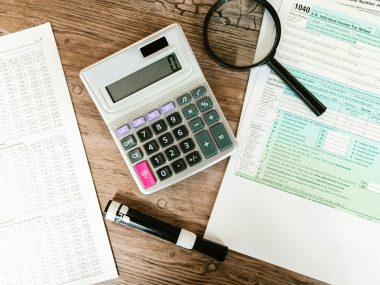Retirement budgeting can feel like navigating uncharted waters but fear not – with the right compass, the journey to a secure retirement can be smooth sailing. Whether retirement is on the horizon or decades away, understanding how to budget for retirement is crucial. It’s all about establishing a plan that aligns with your lifestyle aspirations and financial possibilities.
Here, we lay down the groundwork to build your retirement budget blueprint.
What Basic Steps Should I Follow to Start Budgeting for Retirement?
Starting your journey to retirement doesn’t have to be daunting. Begin with a few foundational steps to chart the course.
Assess Your Financial Situation: First, grasping your financial reality is essential. Determine your net worth by tallying all assets like your home, car, savings, and investments and subtracting any debts or liabilities. This provides a valuable snapshot of where you currently stand.
Estimate Retirement Expenses: Looking ahead, picture your retirement lifestyle. Including living essentials, healthcare, leisure pursuits, and unexpected costs. This will give you a target for your savings.
Calculate Retirement Income: Investigate your future income streams. Social Security, pensions, investments, and any residual income should all be considered. This helps to highlight any potential shortfall.
Create a Savings Plan: Craft a savings strategy with a grasp on your projected expenses minus income. Decide on retirement account contributions, such as 401(k)s and IRAs, focusing on closing any gaps.
Monitor and Adjust: Revisiting and adjusting is the secret to a successful budget. Regularly monitoring and tweaking your strategy ensures alignment with your retirement goals.
In Practice:
- Perform an annual review of your assets and liabilities.
- Estimate monthly retirement expenses, accounting for lifestyle changes.
- Use online tools to predict Social Security benefits and retirement account growth.
- Define clear savings milestones and automate contributions to your retirement accounts.
These steps provide a strategic framework. Regular assessment and adjustments are the keys to sustainable retirement savings.
How Much of My Current Income Should I Aim to Save for Retirement?
Determining how much of your income to save to afford a comfortable retirement later is a balancing act of foresight and flexibility.
Financial experts champion a savings rate of 15% to 20% of your earnings to sustain your living standard into retirement. However, this isn’t a one-size-fits-all formula.
Personal factors influence your optimal savings rate. Consider retirement age, life span, living expenses, and return on investments as dynamic elements in this calculation.
Leverage employer-sponsored plans like 401(k)s, especially those with matching contributions, to bolster your savings more effectively.
Underestimating the impact of compound interest is a common pitfall. Start early and stick to it; the growth over time can be substantial.
Adapting your savings rate as your income and life evolve is not just wise; it’s imperative.
In Practice:
- Commit to saving at least 15% of your income, including any employer match.
- Reassess your retirement savings percentage each time your income changes.
- Increase savings rates annually, even if by a small percentage.
- Use retirement calculators to illustrate the potential long-term growth of your savings.
Remember, the path to a secure retirement is paved with consistent savings and regular reassessment.
At What Age Should I Begin Seriously Budgeting for Retirement?
The golden rule of retirement budgeting is simple: the sooner, the better.
Starting in your 20s harnesses the power of time and compound interest, laying a formidable foundation.
Late starters need not despair – though it means saving more aggressively, beginning at any stage is better than not at all.
Access to employer-sponsored retirement plans, like 401(k)s, should be utilized to the fullest as soon as they’re available.
Life’s milestones often bring financial change. Use these opportunities to reassess and recalibrate your retirement strategy.
In Practice:
- Start contributing to a retirement account with your first paycheck, even if it’s just a small amount.
- Increase contributions with every pay raise or bonus.
- In your 30s or later? Consider more aggressive saving strategies or consult a financial advisor for catch-up tactics.
- Regularly review your budget and goals, especially when life events occur.
The best time to start is now, and the second-best time is today – every year counts!
What Are the Most Common Expenses to Consider When Budgeting for Retirement?
Knowing where your money will likely go during retirement helps to pinpoint savings goals.
- Housing Costs: Assess expected monthly or annual housing-related expenses. This isn’t just about mortgages or rent – think upkeep, insurance, and property taxes.
- Healthcare Expenses: Retirement generally means higher healthcare costs. Plan for Medicare, supplements, and out-of-pocket expenses.
- Daily Living Expenses: The everyday costs don’t disappear. Budget for food, utilities, transport, and attire.
- Leisure and Entertainment: Retirement is your time to flourish. Ensure you set aside funds for travel, hobbies, and dining.
- Unexpected Costs: An emergency fund gives you peace of mind when unforeseen expenses arise.
In Practice:
- Contemplate paying off your mortgage before retirement to reduce monthly expenses.
- Investigate long-term healthcare plans well in advance.
- Create a “retirement lifestyle” budget that includes discretionary spending.
- Allocate funds for spontaneous expenses and emergencies.
With thoughtfulness towards these expenses, you can plan for a comfortable and financially secure retirement.
How Can I Adjust My Retirement Budget as I Get Closer to Retirement Age?
As the horizon of retirement nears, fine-tuning your budget becomes ever more critical.
Reassess expected income sources and tweak your budget to reflect realistic projections for your post-retirement income.
Anticipate expense shifts: work-related costs may decline, but healthcare could rise. Adjust your budget accordingly.
Simplify your lifestyle by downsizing or relocating if it means more financial freedom.
Keep an eye on inflation and strategically adjust your budget so your nest egg keeps pace.
Enter retirement with as little debt as possible to afford more wiggle room in your budget.
In Practice:
- Annually compare expected income to anticipated expenses and adjust contributions.
- Consider consulting a financial advisor to help manage changing income streams.
- Look into low-cost living areas or retirement communities with perks suited for your goals.
- Gradually increase your emergency fund to cover at least six months’ expenses.
By staying vigilant and adaptable, you position yourself for a robust retirement, no matter the economic climate.
Crafting Your Golden Years
Crafting a budget for retirement takes foresight, discipline, and a willingness to adjust as you grow closer to those well-earned years of leisure and freedom.
By considering your present financial health, estimating your retirement needs, calculating your income, and monitoring your saving strategy, you’re ensuring that retirement isn’t just a phase of life but a time of life well-lived and well-funded.
Start now, keep consistent, and your future self will thank you for the comfort and security you’ve built for your golden years.
Please Help Share This Post









